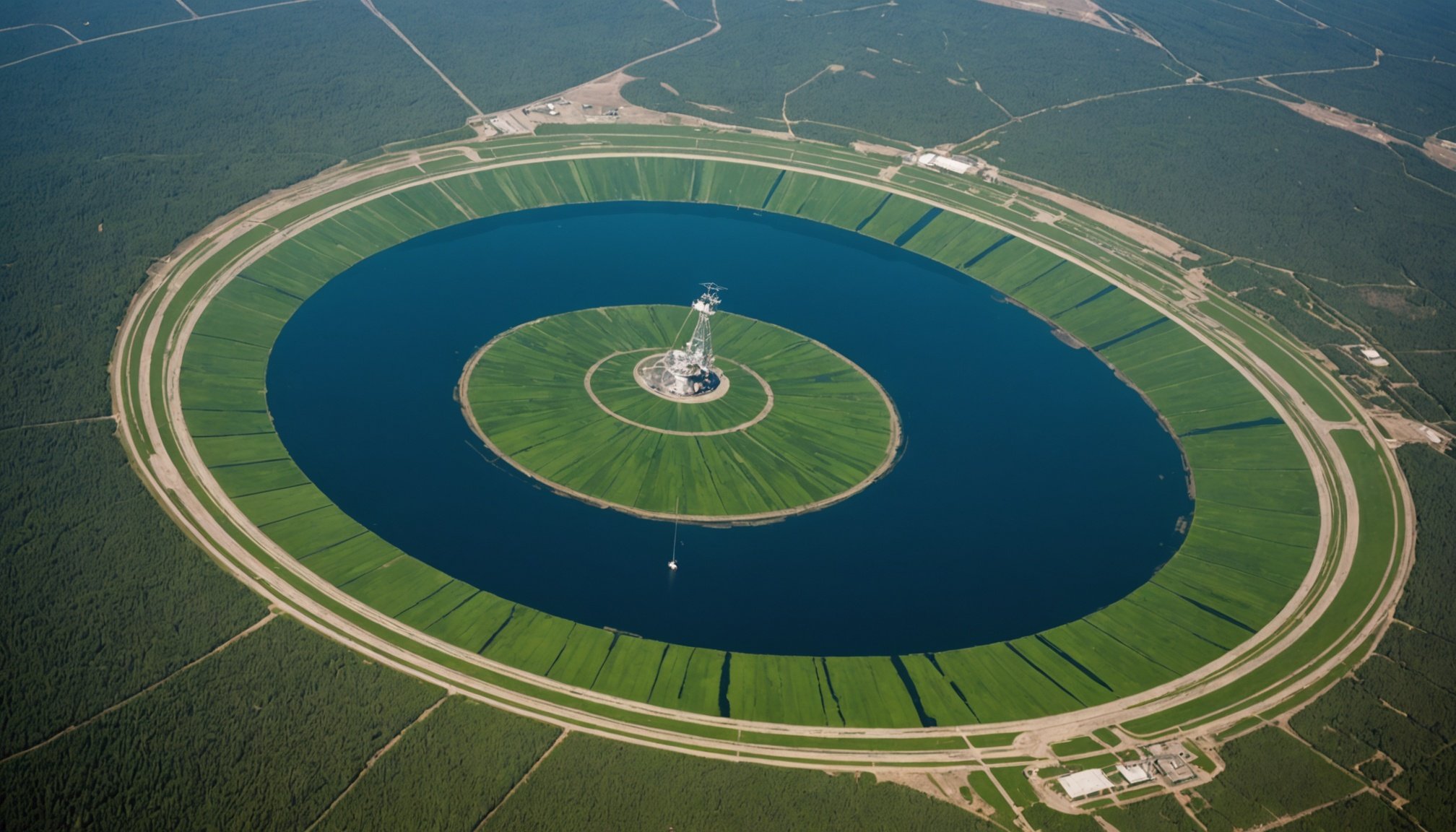Understanding Synthetic Aperture Radar (SAR) Technology
Synthetic Aperture Radar, or SAR technology, is a pivotal advancement in the realm of earth observation. This sophisticated technology operates by sending radar pulses towards the earth’s surface and then collecting the echo of those pulses. Unlike traditional imaging methods that rely on visible light, SAR utilizes microwave pulses, allowing it to penetrate clouds and operate effectively regardless of weather conditions or time of day. This ability grants SAR a significant edge over conventional optical systems for continuous monitoring.
The uniqueness of radar systems lies in their capability for precise imaging, which is further enhanced by modern radar signal processing techniques. These processes convert raw radar signals into data-rich images, enabling detailed data interpretation. Analysts can discern subtle topographical differences, multiple surface types, and even motions in the landscape, which are invaluable for various practical applications.
Topic to read : Mastering daily life: the benefits of ai personal assistants
Compared to traditional imaging, SAR can achieve superior resolution and depth of imagery. This is made possible by its active imaging system, which essentially constructs a virtual array much larger than the physical radar itself. The result is a three-dimensional view of landscapes, providing incredible detail that other methods struggle to match. SAR technology thus stands as a cornerstone of modern remote sensing.
Applications of Synthetic Aperture Radar
Synthetic Aperture Radar (SAR) technology continues to revolutionise remote sensing with its wide array of applications. Among its notable uses is environmental monitoring, where SAR’s capability to penetrate clouds and operate under diverse conditions provides invaluable data.
Topic to read : Mastering daily life: the benefits of ai personal assistants
Agriculture and Forestry
SAR plays a crucial role in crop monitoring and land management. By detecting moisture levels, crop health, and growth patterns, it supports decision-making in precision agriculture. Additionally, SAR aids in identifying changes in forest cover and estimating biomass, thus enabling better forest management and conservation efforts. The ability to provide real-time data allows for adaptive responses to seasonal and environmental changes.
Disaster Management
In disaster management, SAR serves as an effective tool for monitoring natural events such as floods and earthquakes. Its imaging power facilitates the assessment of damage and coordination of recovery efforts. SAR’s all-weather capability ensures it captures critical data during emergencies, providing a crucial advantage over optical systems. Real-world case studies demonstrate its effectiveness, such as in rapidly assessing flood extents and landslide impacts.
Urban Planning and Development
Urban planning benefits significantly from SAR technology, which enhances urban mapping and infrastructure analysis. Tracking urbanisation and land use changes with SAR data helps city planners improve public safety and optimise resources. Through detailed analysis, SAR supports smarter, more efficient city planning strategies.
Advantages of Synthetic Aperture Radar over Traditional Methods
Synthetic Aperture Radar (SAR) offers distinct advantages when compared to traditional optical methods, primarily due to its all-weather and day-night imaging capabilities. Unlike optical systems reliant on sunlight, SAR operates effectively regardless of weather conditions or time of day, ensuring continuous and uninterrupted data acquisition.
SAR technology boasts higher resolution imaging, greatly enhancing precision imaging. The ability to construct detailed images by accumulating data from successive radar pulses allows SAR to capture intricate details of landscapes that optical methods might miss. This precision is particularly valuable in nuanced analysis of topographical changes and environmental conditions.
When it comes to cost-efficiency, SAR surveys offer a scalable option. Although initial setup costs might be high, the ongoing operational expenses are relatively low, given the minimal reliance on atmospheric conditions for data collection. SAR systems can be deployed extensively, covering large areas with fewer limitations, which translates to reduced operational costs over time.
These features secure SAR a leading position in earth observation technologies, providing a robust toolset for global monitoring tasks. Whether mapping urban expanses or studying natural disasters, the precision and versatility of SAR position it as a transformative force in the field.
Current Advancements in SAR Technology
The world of SAR technology is swiftly evolving with groundbreaking advancements that promise to enhance its capabilities and broaden its utility. A key development is the integration with machine learning, a process that significantly enhances data analysis efficiency. The collaboration between SAR technology and AI-driven systems allows for improved automated feature detection and classification, pushing the boundaries of precision in earth observation. Machine learning tools can predict patterns or changes in landscapes based on historical data, providing early alerts for environmental monitoring.
Parallel to this, the advent of miniaturization and satellite development has propelled the versatility of SAR systems. Small satellite technology has taken centre stage, offering a more accessible and cost-effective solution for comprehensive monitoring. Miniaturized SAR systems enable broader deployment with reduced expenses while ensuring high-quality imaging. Upcoming SAR satellite missions are set to further these benefits, focusing on global applications ranging from disaster management to urban planning.
Collectively, these innovations address the increasing demand for robust and expansive observation possibilities, rendering SAR a formidable tool in Earth’s digital transformation landscape. Each enhancement underscores the important role SAR plays in maintaining a vigilant eye on our ever-changing environment.
Future Developments in Synthetic Aperture Radar
Synthetic Aperture Radar (SAR) continues to evolve at a breakneck pace, with new trends shaping its application. A significant future of SAR lies in leveraging machine learning and AI algorithms to refine image analysis. These evolving technologies will not only enhance precision in earth observation but also facilitate predictive analytics, offering early alerts for environmental changes. This transformation will enable more nuanced interpretations of landscape alterations and predictions.
Climate change research stands to benefit immensely from these advancements. Enhanced SAR capabilities will permit more detailed monitoring of global patterns, aiding in assessing the effects of climate change on various ecological systems. This tech-savvy approach offers practical solutions to decipher complex environmental issues.
Another anticipated trend is the formation of international collaborations. By fostering cooperation and sharing robust datasets, countries can collectively bolster their monitoring abilities. This collaboration will enhance the accuracy and reliability of global observations, strengthening SAR’s impact on earth observation.
As SAR technology progresses, it promises to redefine our understanding of the planet, providing cutting-edge tools for scientists and policymakers to make informed decisions regarding environmental management and sustainability efforts. These earth observation trends are vital for a sustainable future.





